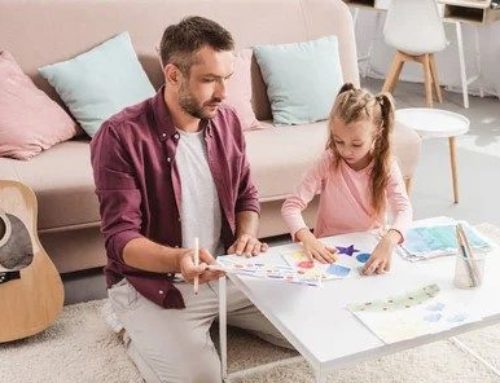Everyone talks about the importance of communication but what does it actually consist of and why is it so important? Each day we use communication, speech and language to connect with people and the world around us. In fact, communication is a basic right and every individual should reach their full communicative potential in terms of speech and language.
Let’s take a closer look at what these terms actually mean. Communication is a two-way process between participants where they exchange information, ideas, feelings, and create and share meaning. This may be done through different means such as spoken or written language, gestures or visual aids. Language is a formal system of words and symbols through which we communicate. We might do this through speaking, listening, reading, writing and viewing. Due to the nature of language, users have the ability to create and share infinite meanings. Speech is made up of the sounds within a language, and it is one of the main ways in which we communicate with people.
Language can be classified as receptive or expressive. Receptive language is how we understand language, which is usually through listening or reading, and expressive language is how we use language, which is usually through speaking and writing. Communication also includes a range of other skills such as social communication, sentence structure, word meaning and vocabulary, grammar and the production of speech sounds.

Now, whilst this may sound overwhelming and confusing, most of us unconsciously use these skills across the day. Think about a simple activity, such as ordering a snack from the canteen or café. Firstly, you use receptive language skills to read and view the menu and make a choice. You then use expressive language and speech to place your order. You might also use non-verbal communication by pointing to the item or the menu. You then use receptive language to understand the response, such as the price or wait time. Additional communication skills are layered into this interaction such as eye contact, turn taking and social communication, such as greetings and manners. So, to complete what looks like a simple action in a small part of your day, you are using a multitude of communication skills, language and speech skills!
It is amazing to think that we start to develop our speech, language and communication skills from birth. Children usually develop their basic foundation skills of speech, language and communication in their first 5 years, and continue to develop and refine their skills right up until adult years, as they learn to use speech and language for literacy, reading and increasingly complex and formal purposes.
When children start school, they are expected to have developed the speech, language and communication foundations needed to participate in learning in the classroom and the playground. The Australian Curriculum has a strong focus on communication in terms of language, literacy and literature, with teaching and learning having a focus on oral language. This can impact children who might have difficulties or a delay with their speech, language and communication, as they may have difficulty understanding and sharing information, creating meaning, communicating requests, interacting and playing with others, developing literacy and numeracy skills and participating in learning activities. In fact, it is estimated that approximately 24% of children have speech, language or communication difficulties at school entry.
Now this can sound concerning, but in reality, some children just need a little support from a speech and language pathologist to develop their skills. Speech and language pathologists study, assess and treat communication difficulties, including those relating to speaking, listening, understanding and using language, reading, writing, social skills, stuttering and using voice. Speech pathologists work with individuals of all ages but early intervention has been proven to be most effective and meaningful for a child, to help them reach their milestones and continue with their learning. In most cases, a child does not ‘outgrow’ their difficulties and they do not ‘go away’ without intervention.
Sometimes parents and teachers can find it difficult to identify speech, language and communication difficulties in a child, as it may often be masked by other skills. Often, they may notice other changes such as frustration, avoidance or refusal to complete homework, participate in activities or talking situations. It is important to remember that they may have speech, language and communication difficulties for a range of different reasons, and it is not a cause of parenting or a child being lazy.
All children develop at different rates but most children learn skills within an age range. You can help your child’s speech and language development by:
- Talking, reading and playing together
- Listening and responding to what they say
- Commenting about your actions and your child’s actions
- Using your home/primary language as well as English
- Using new and different words
- Starting to use longer sentences as they get older
- Encouraging your child to play with other kids
Speech Pathologists are here to work together with families and teachers to make learning fun! If you’re unsure if your child has speech, language and communication needs or difficulties, we welcome you to get in touch with us here at Beam Health to book in a consultation with our experienced Speech Pathologist.

Delna Pryde
References
American Speech-Language-Hearing Association. (1993). Definitions of communication disorders and variations [Relevant Paper]. Available from www.asha.org/policy.
American Speech-Language-Hearing Association. (n.d.). Early identification of speech, language, and hearing disorders. Available from: www.asha.org
Speech Pathology Australia. (2017). Speech pathology in schools. Available from www.speechpathologyaustralia.org.au









